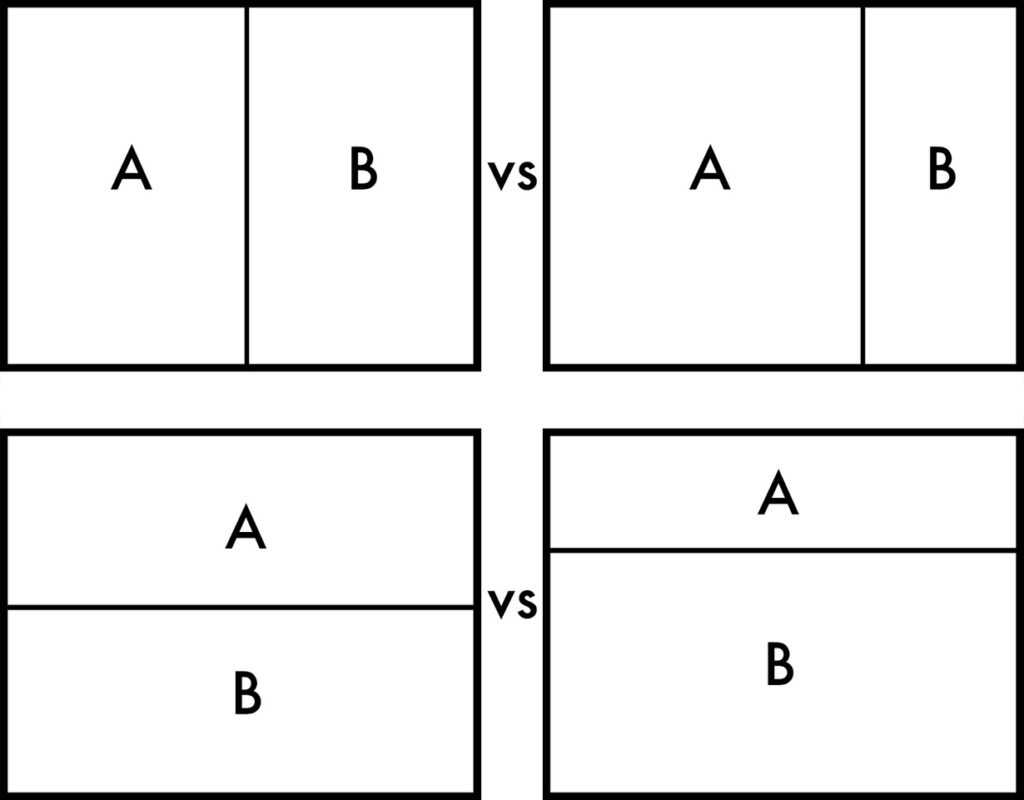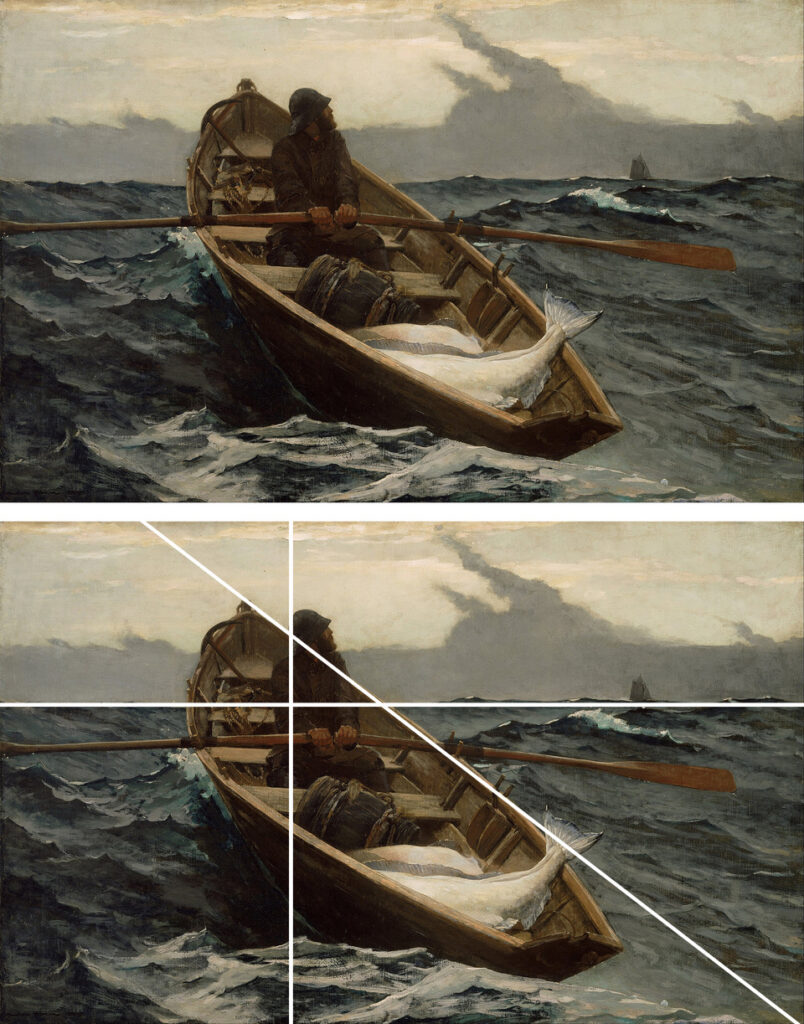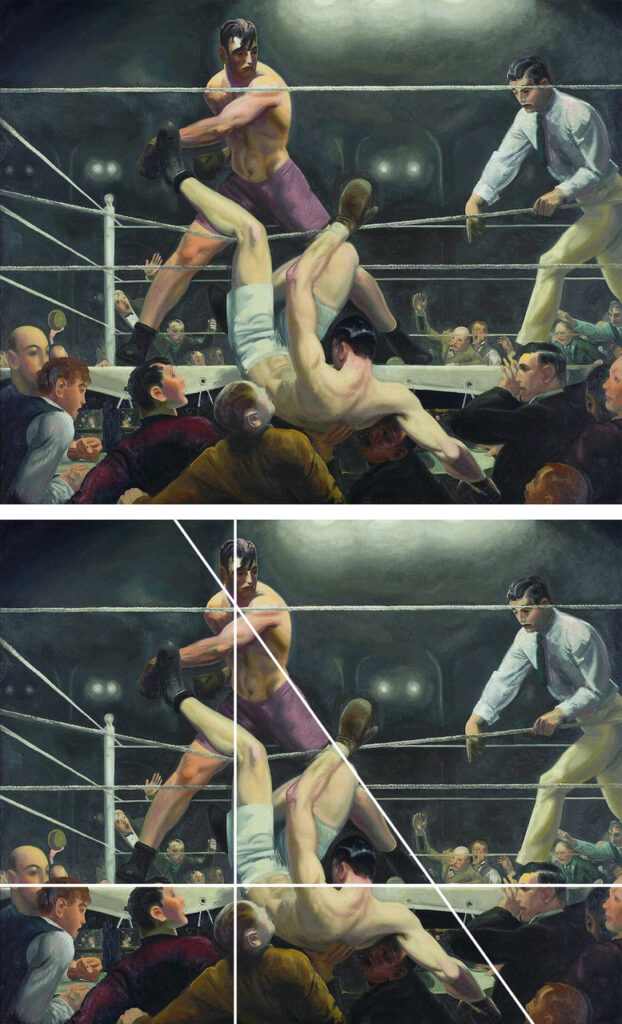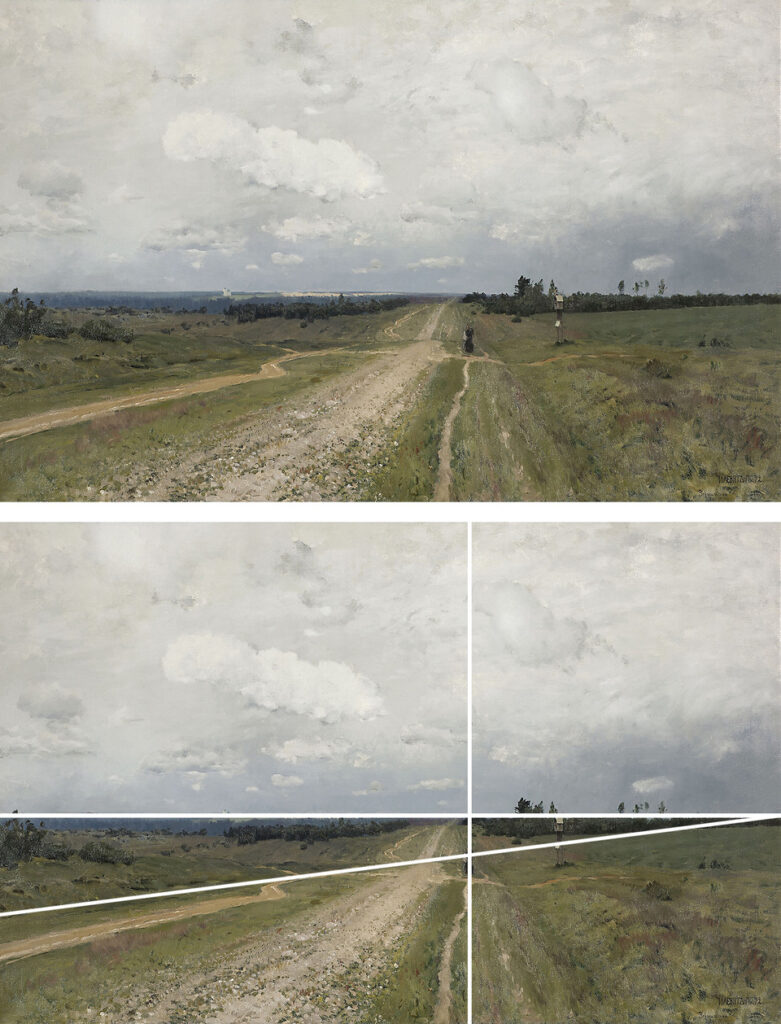Back when I was beginning to paint the landscape, I did this great trip with a few others to the Wind River Mountains. It was an ambitious trip for me, especially because I was a novice painter. I remember asking myself, “How do I capture this subject on my canvas?” and “Where should I put the focal point?” Heck, I was asking, “What IS a focal point?”
When people take photos they frame a subject so it looks good. As “artists” we are often credited with having a “good eye”. But in doing a painting with a whole world in front of us and a panel that can capture only a part of it, the idea of subject placement becomes job one.
I remember observing how unequal divisions created a relationship of spaces. Notice the diagram below. On the left are rectangles with equal divisions, on the right, with unequal. In this most simple of illustrations, notice how on the left, A and B are equal in size and shape. They almost become meaningless, speechless. On the right, A and B are unequal and they now are in relationship to each other in a way that says something about each. This principle of unequal divisions is foundational to good composition.

Most of us have heard of the “rule of thirds”, which is very helpful. Arguably the more sophisticated version of that concept uses the golden mean, used throughout history in painting. Below are a few examples from some of my heroes. Let’s take a look at how their primary subjects are positioned on the canvas.
In Homer’s “The Fog Warning”, both the dominant vertical and dominant horizontal follow this idea. Additionally, so does the diagonal. The three directional lines make for a simple yet powerful composition.

Bellow’s “Dempsey and Firpo” follows a similar structure where in this case, the strong diagonal is even part of a triangle

Isaac Levitan, the most poetic of these three, paints “Vladimirka Road”, a dirt road on an overcast day. It is a masterpiece of simplicity. If the vanishing point was centered like the left sides of our diagram above, each division would compete with each other, and it would be a weaker painting.

I include the last image, “Smith Rock”, because I kept the basic principle of unequal divisions in mind as I approached what for me was a complex subject. I have found that doing so helps all my work.

Finally, in the first “Pirates of the Caribbean”, when Keira Knightley’s character pleads for “parlay”, according to the the “pirates’ code”, the captain’s response was “the code is more of what you’d call…guidelines than actual rules”. The same applies here.